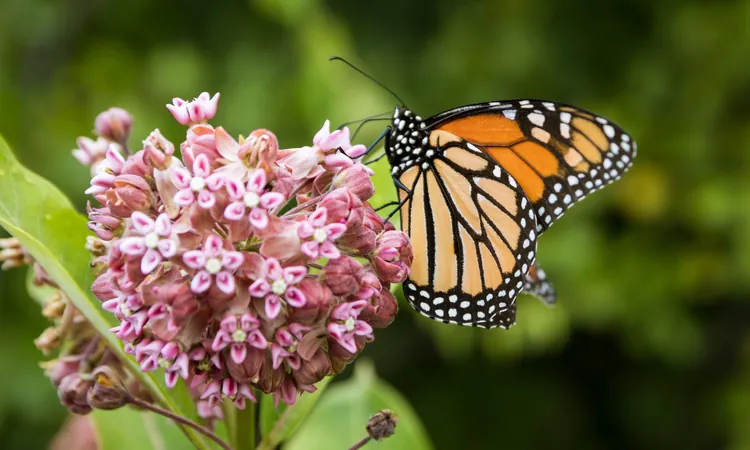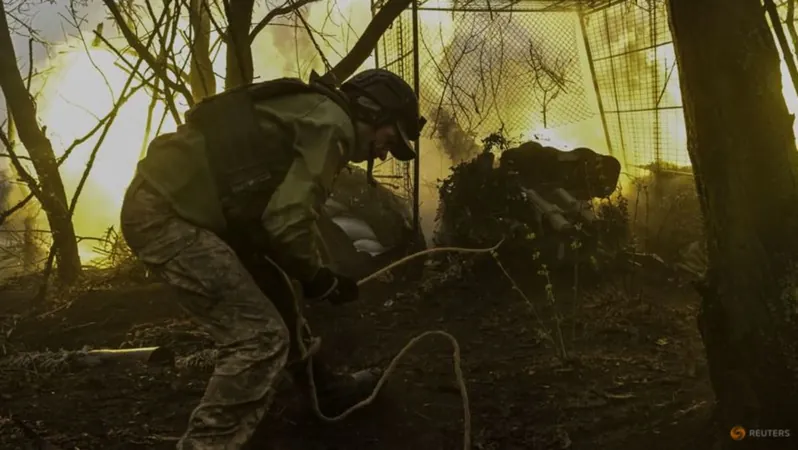
The Reverse Butterfly Effect: How Climate Change Turns Refuge into Ruin for Mountain-Dwelling Butterflies
2025-04-01
Author: Rajesh
Butterflies have long fascinated humanity with their vivid colors, delicate wings, and enchanting movements. Beyond their aesthetic appeal, these vital pollinators and integral components of our ecosystem are now facing unprecedented threats. A recent study spearheaded by Yale researchers has issued an alarming climate warning: the mountainous habitats that were once considered refuges for these creatures are increasingly transforming into deadly traps.
This groundbreaking research, published in the esteemed journal Nature Ecology and Evolution, presents the first comprehensive global assessment of butterfly diversity in relation to climate risk, revealing a quiet yet severe crisis that is unfolding across mountain ranges worldwide.
A Haunting Twist to the Butterfly Effect
The "butterfly effect" is a well-known concept in which minor actions can have significant consequences, such as a butterfly's wing flap leading to a distant hurricane. This study, however, identifies a more disturbing phenomenon: a global crisis that endangers butterflies at their very source. Researchers found that mountain habitats, previously thought to be safe havens, are experiencing rapid warming, effectively becoming traps with diminishing opportunities for these butterflies to adapt.
As climate change accelerates, many butterfly species may find themselves with nowhere higher to migrate as their thermal niches vanish. Species that have evolved to thrive in cooler climates are expected to face the direst consequences. Alarmingly, the findings suggest that by 2070, a staggering 64% of the thermal niches for tropical butterflies may be rendered uninhabitable.
The Data Deluge: Mapping Climate Risks for Butterflies
Led by Yale ecologist Walter Jetz and entomologist Stefan Pinkert, the research team tirelessly compiled extensive phylogenetic and geographical data on over 12,000 butterfly species. Their findings indicate that two-thirds of butterfly species reside in tropical and subtropical mountain regions, which boast 3.5 times as many butterfly hotspots compared to lowland areas. Yet this concentration also amplifies the threat posed by climate change.
The rapid warming of mountain zones coupled with a lack of adaptability among certain species signals a troubling trend that could lead to mass extinctions. Jetz emphasizes the urgency of this issue, stating, "The diversity, elegance, and sheer beauty of butterflies inspire people across the globe. However, our first global assessment of butterfly diversity reveals that their unique adaptation to higher-elevation environments may now spell disaster."
A Conservation Blind Spot Exposed
The stark contrast between the fortunes of butterflies and those of more prominent animal groups raises concerns about current conservation strategies. Bird and mammal patterns typically guide conservation efforts, but butterflies exhibit vastly different ecological responses. As a result, significant gaps exist in protecting critical insect habitats, putting their survival at risk. Until now, no comprehensive global assessment of climate impacts on any insect class had been conducted, with butterflies serving as the imperative first test case.
Butterflies do not just symbolize beauty; they are essential indicators of environmental health. Their decline serves as a bellwether for broader ecological disruptions.
Looking Ahead: Hope for Resilience Amid Crisis
Despite the stark realities presented by this study, researchers assert that proactive measures can still be taken to safeguard butterfly populations. Prioritizing the protection of vital habitats, especially in tropical regions, and establishing migratory corridors can be instrumental in mitigating the impacts of climate change. This fresh perspective necessitates improved data collection on insect populations and a commitment to broader conservation planning.
Tools like the Map of Life, a comprehensive database tracking species distributions globally, are crucial for advancing these efforts. "A unified approach combining reduced carbon emissions with the preservation of critical butterfly habitats will be pivotal for protecting biodiversity for future generations," Jetz remarked.
This study, with contributions from esteemed colleagues including Nina Farwig and Akito Kawahara, was made possible through various esteemed organizations such as the Alexander von Humboldt Foundation and the National Science Foundation.
As butterflies struggle against the mounting pressures of climate change, their plight is more than a tale of an endangered species; it is a clarion call for humanity to act decisively. Time is running out, making our next steps crucial not only for the survival of these beautiful insects but for the health of our planet as a whole.
To delve deeper into this pressing issue and track butterfly distributions globally, visit the Map of Life. The challenges ahead are significant, but our collective actions can still pave the way for a more hopeful future.





 Brasil (PT)
Brasil (PT)
 Canada (EN)
Canada (EN)
 Chile (ES)
Chile (ES)
 Česko (CS)
Česko (CS)
 대한민국 (KO)
대한민국 (KO)
 España (ES)
España (ES)
 France (FR)
France (FR)
 Hong Kong (EN)
Hong Kong (EN)
 Italia (IT)
Italia (IT)
 日本 (JA)
日本 (JA)
 Magyarország (HU)
Magyarország (HU)
 Norge (NO)
Norge (NO)
 Polska (PL)
Polska (PL)
 Schweiz (DE)
Schweiz (DE)
 Singapore (EN)
Singapore (EN)
 Sverige (SV)
Sverige (SV)
 Suomi (FI)
Suomi (FI)
 Türkiye (TR)
Türkiye (TR)
 الإمارات العربية المتحدة (AR)
الإمارات العربية المتحدة (AR)